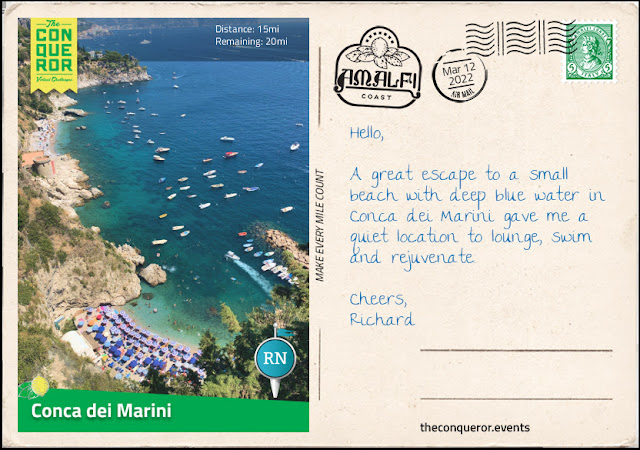Conca dei Marini is a small town of less than 700 people. It is mostly known for two things: the Emerald Grotto and the Santa Rosa dessert known as Sfogliatella.
The grotto is a partially inundated cave measuring approximately 147ft (45m) long, 105ft (32m) wide and 79ft (24m) high above water level. It’s unique emerald colour is due to an underwater fissure that filters light through. Inside the cave are columns of stalactites and stalagmites of varying shapes and some as high as 33ft (10m). The grotto was discovered by accident in 1932 by a local fisherman.
To the east of the grotto atop a promontory is the Cape of Conca Tower. Built in the 16th century, as a watchtower, it carried the same purpose as the one in Cetara and Minori, defending the territory from the Turks. Once it lost its importance, the tower was used as a cemetery until 1949 when the local government restored it and turned it into a museum. Reaching the tower required a downhill hike on a well paved road, followed by a steep uphill climb via stairs but the effort was rewarded with spectacular panoramic views of the coast, the sea and the houses perched on the hills.
Located high up on a hill is the 17th century Santa Rosa Monastery where a nun wanting to use up leftovers created an entirely delicious pastry dessert called Sfogliatella Santarosa. Using leftover bread dough she added white wine and lard and kneaded it into a puff pastry. The nun then combined her leftover semolina cooked in milk with lemon liqueur, dried fruit and sugar turning it into a custard. Adding the custard to the puff pastry it was then baked in a wood oven. The dessert was such a success that its recipe was guarded for the next 150 years until a pastry chef from Naples acquired it, reproduced it and began selling it in the early 1800s. The pastry dough and filling has varied since but it remains a well-loved dessert, so much so that it has its own annual festival in town in August.

No comments:
Post a Comment